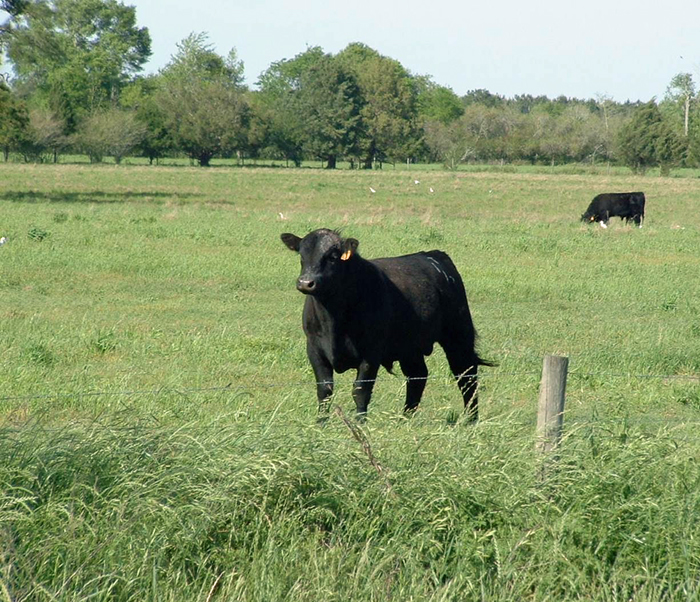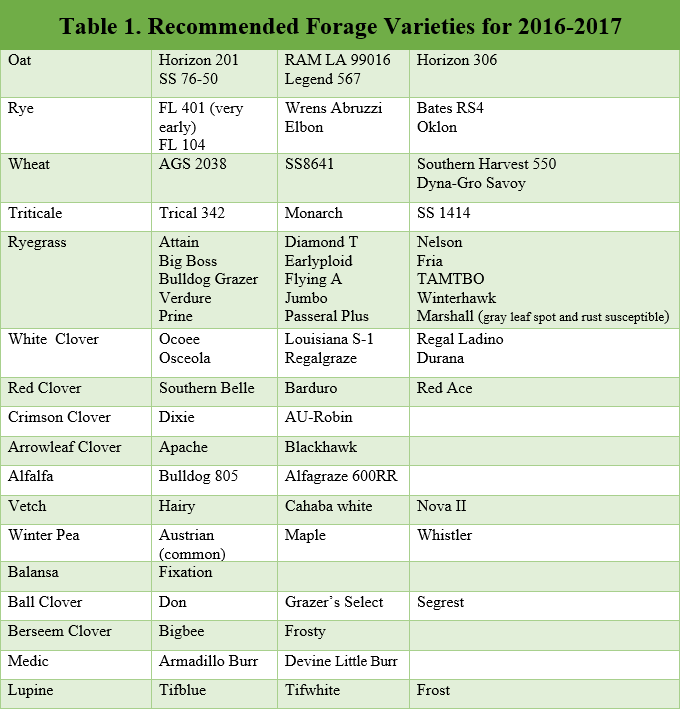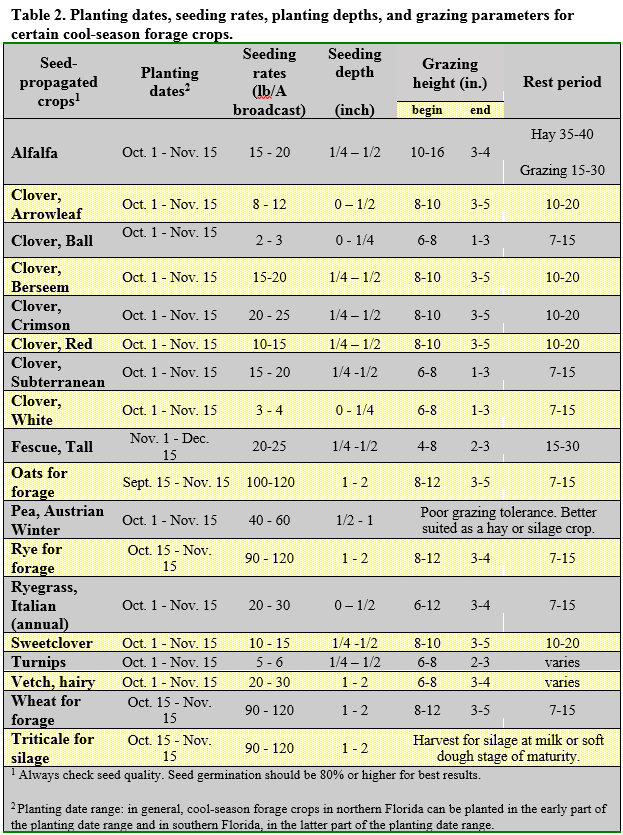 Ann Blount & Jose Dubeux, North Florida Research and Education Center; Patricio Munoz, Ali Babar, Kevin Kenworthy, and Ken Quesenberry, Department of Agronomy; and Joao Vendramini, Range Cattle Research and Education Center
Ann Blount & Jose Dubeux, North Florida Research and Education Center; Patricio Munoz, Ali Babar, Kevin Kenworthy, and Ken Quesenberry, Department of Agronomy; and Joao Vendramini, Range Cattle Research and Education Center
Seed availability this year for most cool-season forages should be in good supply. There was reported difficulty with local production of cereal rye, however seed producers from outside the state indicated that seed yields and quality were very good and seed availability for small grains, ryegrass, clovers, winter peas and medics should be adequate. However, we suggest that enterprises depending on planting cool-season forages request their needs quickly to secure their seed so as to have it available at planting time. Some crops, such as vetch, may need to be special ordered through participating seed companies.
Seed of triticale should be more readily available this season. Harvests of Trical 342 triticale in northern Alabama and southern Tennessee was successful and seed quality was excellent. At the present time, few varieties of triticale are recommended in Florida and include Trical 342, Monarch, and SS 1414 (Southern States). We continue to test other varieties of triticale that are being sold in the state, however we find that many of these are not adapted to Florida. Those tested were either too late in their forage production or had significant disease problems.
There should be an adequate seed supply on the market of oat. Remember that a new strain of crown rust has been problematic on most oat varieties. Only Legend 567, a new crown rust resistant variety, is available commercially. Next year we anticipate another rust resistant oat to be available on the market. While we still recommend several other oat varieties, care should be taken to check for rust, graze timely to prevent disease spread or, if growing for silage, haylage, or seed, consider spraying with a legal fungicide. A later planting date should also minimize the problem, or consider combining oats with ryegrass in a mixture with other cool-season forages to spread the risk.
As in most years, moisture is the key to successful fall forage plantings. Our current predictions are for sufficient rainfall during our fall planting window, which generally starts in mid-September through mid-November.
Recommended varieties for planting this fall are listed in Table 1. While there may be other suitable varieties, our recommendations are based on multi-location, multi-year testing under our Florida growing conditions.

The use of trade names in this publication is solely for the purpose of providing specific information. UF/IFAS does not guarantee or warranty the products named, and references to them in this publication does not signify our approval to the exclusion of other products of suitable composition.
The suggested seeding rate for all small grains is 90 to 120 lbs. per acre. If planting a mixture of cool-season forages, you should adjust the seeding rate for each component to half of the recommended rate. If you plant late in the season, use the higher end of the recommended seeding rates for each forage. Additional information to help you with seeding rates, planting depth and grazing or hay recommendations are found in Table 2.
- If pastures are not irrigated there is risk involved with planting cool-season forages. Conserved forage or supplements may be the better option.
- If you do plant winter grazing on non-irrigated land, remember that small grains are more drought tolerant than ryegrass.
- When planting ryegrass either in a mixture with small grains or alone, plant on wetter sites. Ryegrass needs good moisture for establishment and growth.
- Vetch and winter peas are fairly drought tolerant. Clovers, however, prefer good moisture for germination and establishment. There is some variation in site suitability for clovers. While, white clovers prefer wetter sites, crimson, red, arrowleaf, and ball are more tolerant of well-drained soils.
If you should have questions about planting cool-season forages please contact your local UF/IFAS County Extension Agent. An updated and complete version of the 2016-2017 Cool-Season Forage Variety Recommendations will be available on-line at http://edis.ifas.ufl.edu in the near future.
- Cool-Season Forages – A Pasture Perspective for 2022 - September 16, 2022
- Ornamental Rhizoma Perennial Peanut for Groundcover or Alternative Turf - March 18, 2022
- 2021 Cool-Season Forage Recommendations for Livestock and Wildlife - September 24, 2021

